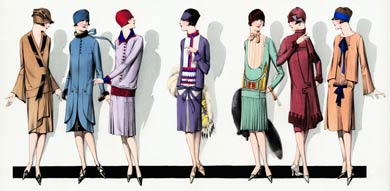Jun 29 2011
Posted by ashleigh.baker under Uncategorized
New Technology of the 1920’s
With the recent invention of automobiles, city streets became chaotic and dangerous. There was a mixture of pedestrians, buggies and cars and a need for order. In about 1920, Detroit police officer William Potts invented an overhanging four-way, red, green, and yellow light system. The traffic light brought order to the chaotic city and also set the trend for inventing ways to modernize the city. 
 “One of the chief values of clothing is that it enables people to advertise themselves in a way that will win the attention and admiration of others. Many who lack any ability and could not hope to rise above the “average” on their own merit alone, find a satisfactory outlet for this desire for recognition through the medium of dress.” (Hurlock 1929:28-29) Elizabeth Hurlock described the importance of fashionable dress.
“One of the chief values of clothing is that it enables people to advertise themselves in a way that will win the attention and admiration of others. Many who lack any ability and could not hope to rise above the “average” on their own merit alone, find a satisfactory outlet for this desire for recognition through the medium of dress.” (Hurlock 1929:28-29) Elizabeth Hurlock described the importance of fashionable dress.






















